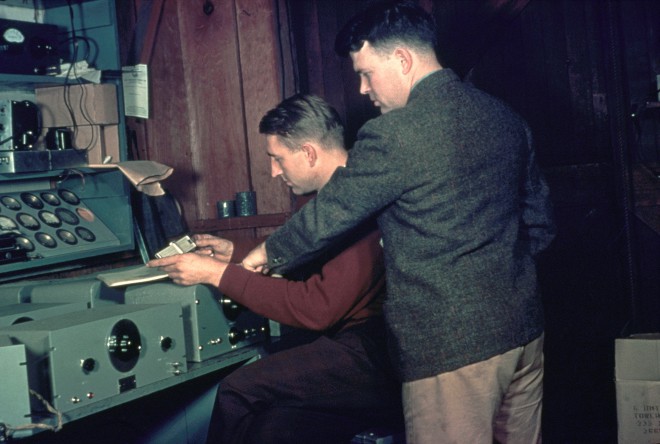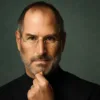The founding fathers of Silicon Valley are actually more important than presidents and kings. You must know the story that bent the future!
Today, Silicon Valley is the concept of a vision of the future - a valley where dreams are allowed. Where this dream means the basic building block of every business idea. What makes it even more powerful and charismatic is its almost 80-year history, in which rock stars of technology, designers and scientists have co-created the future we all live today. With their ideas that were distant dreams, they built our present and are shaping and creating our future. The founding fathers of Silicon Valley are actually more important than presidents and kings. In their hands are the scissors and the canvas of our common future. And looking into the future today predicts that the future will be incredibly exciting. Can you imagine a world without your smartphone?! Then you need to know the story that bent the future!
A true entrepreneurial mindset
Layer upon layer, decade upon decade, innovation begetting new innovation—that's it matter, which keeps Silicon Valley creating innovations that shape the future. But this is not a coincidence. It is about the mindset and awareness of its creators that nothing in life is a coincidence. An entrepreneurial mindset combined with a touch of crazy vision and the belief that nothing is impossible. And right here lies the key to the success of the great ideas that are born in this extremely homely and friendly place for visionaries. Silicon Valley has cut into the pores of modern society and is shaping its future. It is a land where dreams are allowed - not only allowed, but right at home. Because only from them can amazing things grow. To dream, to surpass oneself and to believe like a child is written here in capital letters.
Coincidences and real moments of history that are created in the home garage
Silicon Valley didn't just happen because of a single idea. The basis for its creation is actually the visions of various visionaries in past or semi-past history, such as Charles Babbage - a scientist who designed and seeded the idea of a modern computer with his analytical machine from 1856. Or the mathematical genius Ada Lovelace, who is known for creating the first computer program and thereby laying the foundations of modern programming. And Alan Turning, whose life story we know from the movie "The Imitation Game (2014)" and who is credited with deciphering the famous German encryption device Enigma during the Second World War. He is the first to ask himself the question: "Can computers imitate human behavior?" Many visionaries built the foundations with their dreams and visions of the future, on the basis of which, south of San Francisco, the nationalized legends of companies born in home garages began to be born. But the story is, as usual, much more complex. In the 1920s and 1930s, Silicon Valley was considered to be fruit metropolis, because south of San Francisco there were endless fields of fruit trees and there was a real fruit industry. That is why the valley was affectionately called kar The Valley of Heart's Delight – the valley of rapture. With the great economic crisis in 1929, fruit growing in the valley disappeared, and thus a place appeared for a new industry - the military industry, which was the driver of development in the following years.
At the right time in the right place
In this valley, coincidences are almost a part of fake legends, because practically everything happens at certain key moments. As the military industry began to emerge in the valley, friends Bill Hewlett and Dave Packard founded a company they called Hewlett-Packard. The order of surnames was determined by tossing a coin. The year was 1939. Officially, the founding of the Hewlett-Packard company is considered the birth of Silicon Valley, although the real foundations for accelerated development were laid in the following years. At that very time, Stanford University found itself in a major financial crisis, as a result of which they were forced to lease a large part of their land, on which the technology park was created. A web of coincidences connected the industry to the university. Companies and professors, but more importantly - students and visionaries. If we look at the map of Silicon Valley today, it becomes clear how crucial Stanford University's role has been and how it is at the center of everything related to what Silicon Valley means today. From Stanford University to the headquarters of technology giants such as Google (Googleplex), Apple and Facebook, you only need 15 minutes by car. Although the companies are not equidistant (distances) and are not in the same directions, it is Stanford that represents the symbolic epicenter of Silicon Valley. Even today… more than 60 years later.
A modern silicon computer chip

Silicon Valley got its name from the most important invention of the second half of the 20th century – the silicon chip, invented in 1961 by American electrical engineers Jack Kilby and Robert Noyce. The invention drastically changed technology and paved the way for the modern personal computer. This very innovation, these little computer chips, haven't changed drastically in basic principles over the last 60 years. They power your smartphone, computer and virtually every small household appliance – even those in the kitchen. Without pioneers like Jack and Robert, future creators of the future like Steve Jobs, Bill Gates and Mark Zuckerberg would not have had the essential tools to change the world and build their incredible empires. Based on your even bolder dreams. Name Silicon Valley it only caught on in the mid-1980s with a series of articles written for Electronic News by journalist Don Hoefler, and thus became a general term for the industrial area south of San Francisco.
Garage companies - they are not just an urban legend
The commonly known story is that it all started in the home's garage. And this is by no means an urban legend, but the reality of the creators of crazy ideas, which unites at least three giants HP, Apple and Google in a common story. HP - Hewlett-Packard. The company, founded in 1939, began its journey with 538 dollars of founding capital and headquarters right in the garage of Dave Packard and his wife. Bill Hewlett, who did not have enough money to rent his own apartment, also lived in the garage for a while in addition to HP. APPLE. In 1978, Steve Jobs and Steve Wozniak started their joint business journey in the garage of Jobs' parents. Here, he and a team of friends managed to create the first commercial products, such as the famous Apple I, without realizing that they were actually creating a company that would change information technology forever. GOOGLE. Sergey Brin met Larry Page in 1995 when he was leading a Stanford faculty tour. Almost immediately, they realized they had common ground, and the following year they began working on the Google search engine idea, while still living on the Stanford University campus. In September 1998, they rented a garage, but after just over 5 months, the company outgrew it and moved to Palo Alto with eight employees.

Technological Milestones Changing the World (Timeline)
1961 – The integrated circuit – the modern computer chip.
1971 - 8-inch floppy disk - IBM introduces the floppy disk, the first physical data transfer device.
1976 - Apple l - The first personal computer, for which Apple receives 50 orders from a known buyer in advance.
1979 - Sony Walkman - Sony introduces a device that puts music in your pocket.
1981 - MS-DOS - Microsoft introduces MS-DOS, the long-standing basis of all Microsoft operating systems.
1983 - Portable telephone - Motorola DynaTAC, sold commercially for US$4,000.
1984 - Apple Macintosh - First computer with a mouse and modern user interface - windows.
1989 - The Internet - Tim Berners-Lee establishes the HTTP protocol as the basic building block of the modern Internet.
1995 - Windows 95 - The first modern operating system with a start button.
1997 - Google - Larry Page and Sergey Brin register the google.com domain, creating the foundation for one of the world's largest technology empires.
2002 - T-Mobile sidekick - The first phone with a large screen and integrated keyboard and texting capability.
2004 - Facebook - Mark Zuckerberg and his partners found TheFacebook.com And two years later, he rejected Yahoo's offer worth as much as 1 billion.
2005 - YouTube - Steve Chen, Chad Hurley and Jawed Karim found YouTube, which was bought by Google a year later for $1.65 billion.
2007 - Apple iPhone - First touchscreen smartphone, marking a milestone in smartphone technology as we know it today.
2012 - The Raspberry Pi Foundation introduces a credit card-sized computer that has everything the big guys have (as long as you have a keyboard, mouse, and screen) and costs just $25.
2015 - Adidas - Adidas announces custom 3D printed sneakers.
Rivalries, deceptions and friendships that marked the development of technologies
Certainly the most famous and legendary is the story of the rivalry between the pioneers of the computer industry, Steve Jobs and Bill Gates, who regularly billed through the press, even though their companies Apple and Microsoft collaborated in the 1980s to develop the graphical interface for personal computers, which later became an apple long-standing dispute. Apple ordered Microsoft to copy the existing Xerox operating system, which already used the philosophy of computer windows and a computer mouse to manage the user interface. But it turned out that Gates had his own plans and commercialized the idea of windows with IBM, the largest technology company at the time, who was the first to use Windows. Through the press, Jobs repeatedly described Gates as completely without ideas, but Gates didn't know any different. In 2007, they buried their long-standing hatchet and admitted in a panel at the D5 conference that without their rivalry there would not have been such technological progress. In fact, it was partnerships and real rivalries throughout the history of Silicon Valley that provided the environment for the creation of real stories that made history. I can argue that Apple would not have become the company we know today without the special bond between Jobs and the computer genius Steve Wozniak, the one who actually made Jobs' dream of the personal computer possible and was the genius who technically made his visionary ideas come true. . Also, Apple wouldn't be the company it is today without a real rivalry with Microsoft. These kinds of ties and relationships have also led to all the major innovations in the field of technology in recent history.
The web bubble and the second wave of information technologies
The advent of the Internet led to a boom in a new branch of technology, with companies springing up literally overnight and becoming online blockbusters. All this was made possible by the favor of investors, who were clamoring for future returns and did not take into account traditional guidelines. The Internet meant such a tempting business that he felt like it money hard to resist. The period can be described as a gold rush, when just about every investor wanted to be next to it. But as with any technology, there was still a lot to learn and to wait for the right moments in history. The world was not yet mature enough for the Internet, and the amount of venture capital that did not bear fruit was enormous. It is because of this that between 1999 and 2001 there is a crash in the stock market, according to some estimates, the markets lost 5 trillion, and some brands that are still known today in the field of online technologies lose even 90 percent of their value. Among them was Amazon.com, which fell from a stock value of $700 a share to a shocking $7 a share, but they managed to recover. A similar story befalls eBay.com and many other well-known names, some of which are exploding online the balloons did not survive. Thus, domains such as Pets.com and Webvan.com are written down in the annals of history. Due to the resulting circumstances, the Internet industry needed a long time to regain the trust of investors, which enabled the second wave of the modern Internet, which seems to be unstoppably penetrating every pore of our society. With the emergence of social networks, such as Facebook, and a variety of web communication and content publishing options (YouTube), the world as we have known it is actually changing. The media landscape is changing, and it is increasingly becoming a world in the domain of the individual. The industry appears to have outgrown childhood illnesses, although many warn of another collapse.
Vision of the future and visionaries
If Steve Jobs introduced the first generation iPhone in 2007 and thus heralded a new era and thus reinvented the telephone, we know that this decade will also see similar revolutionary inventions with similar weight. Our body will be digitized with wearable devices wearables, smart devices are coming to our homes that will be connected to a set of functions that we will one day be able to call a smart home. Today's visionaries of the future, such as Elon Musk, are already promoting the idea that the car will one day be electric only. Google and car manufacturers are trying to make cars drive completely independently - autonomously and safer than humans. This reality of the future awaits us in a few years. Ten years ago, did you think that your car could park itself? A feature that practically every new vehicle has today. Or that you will carry a computer or a smartphone in your pocket, which already has almost all the functions of a computer. Man dreams of space travel again and Nasa predicts that in twenty years we will land on Mars. Society and social customs are also changing. Ljubljana won just over a month ago car sharing, which changes the way we look at car ownership and shows how this object of desire, the concept of ownership, might once have been treated. Through all the factors we become different, we perceive the world differently and receive information differently. The generation of millennials knows no language boundaries, they live in a different media world. They check YouTube, Twitch and Snapchat first, and only then can we catch them on Facebook. They do not know television and find it difficult to list 5 television programs. Society is changing and it must be recognized that most social changes and revolutionary ideas come from the wild west, from the valley we call Silicon Valley. Where dreams of the future are born, realized by great people. In fact, with their sometimes crazy ideas, they change society to such an extent that we can argue that they are more important than presidents and kings. They have the scissors and canvas of our common future in their hands. Silicon Valley, however, can be described without hesitation as the cradle of dreams for the future.












